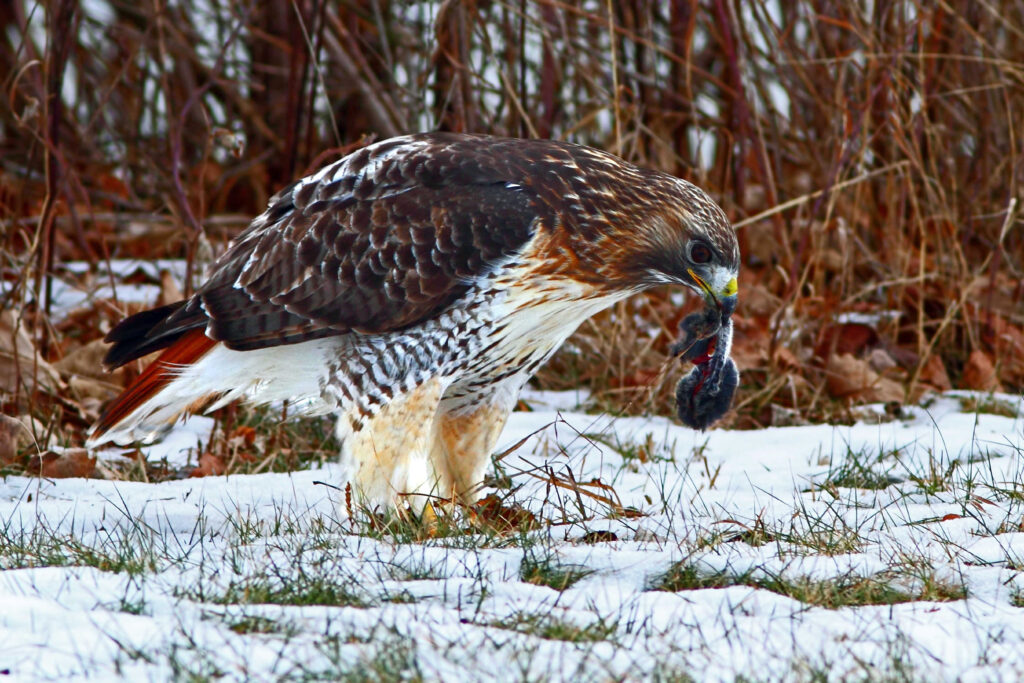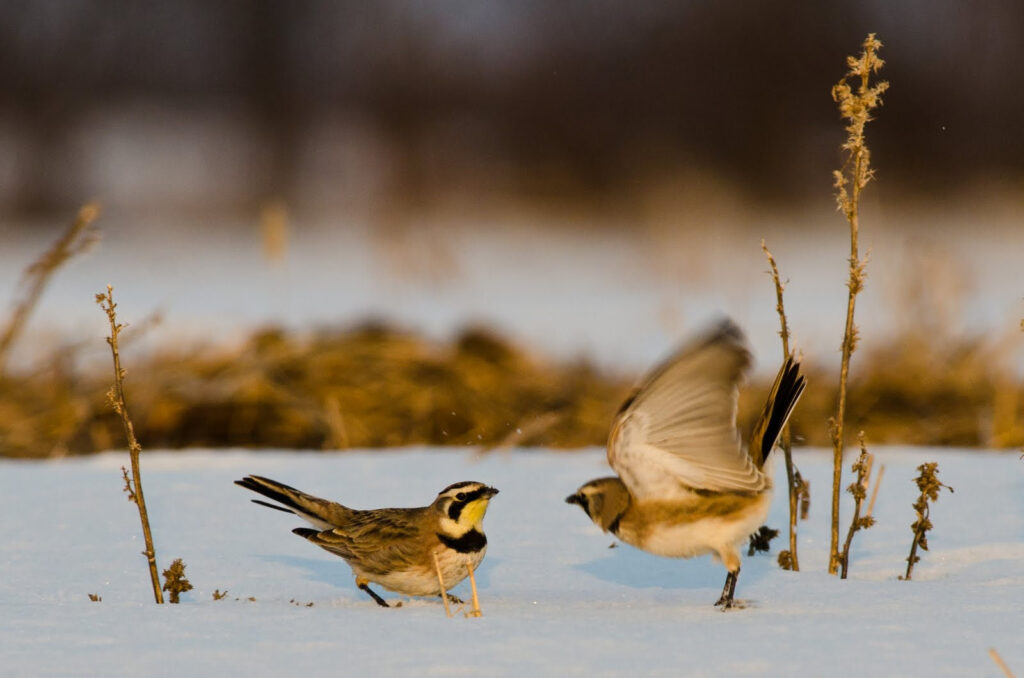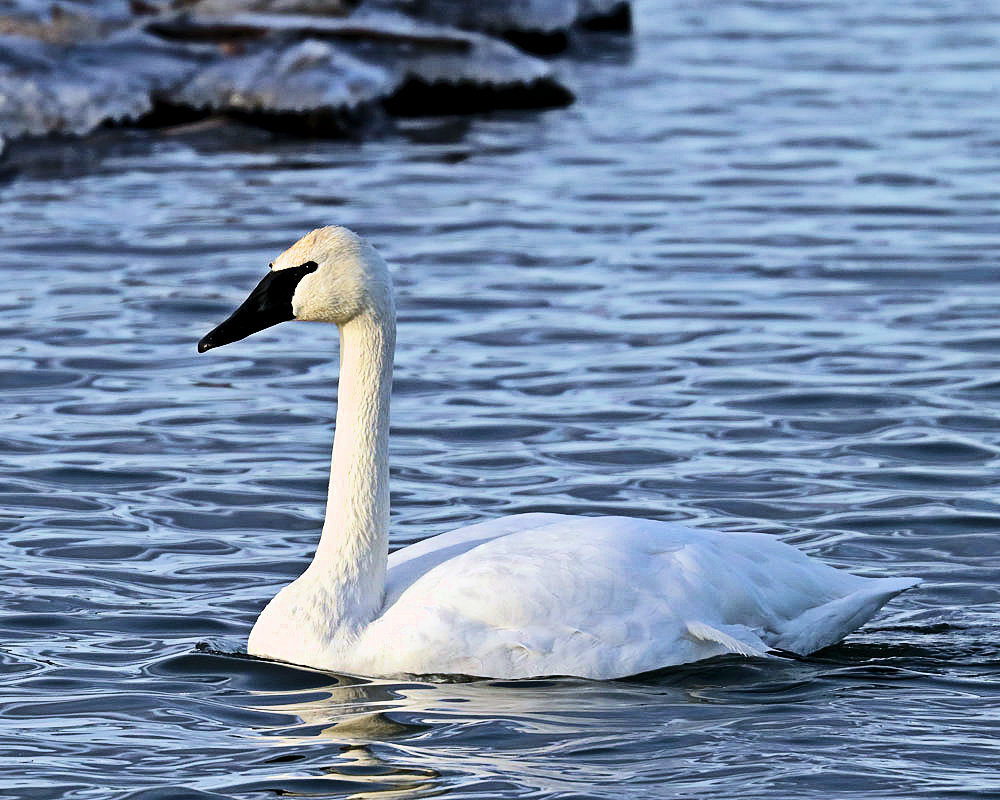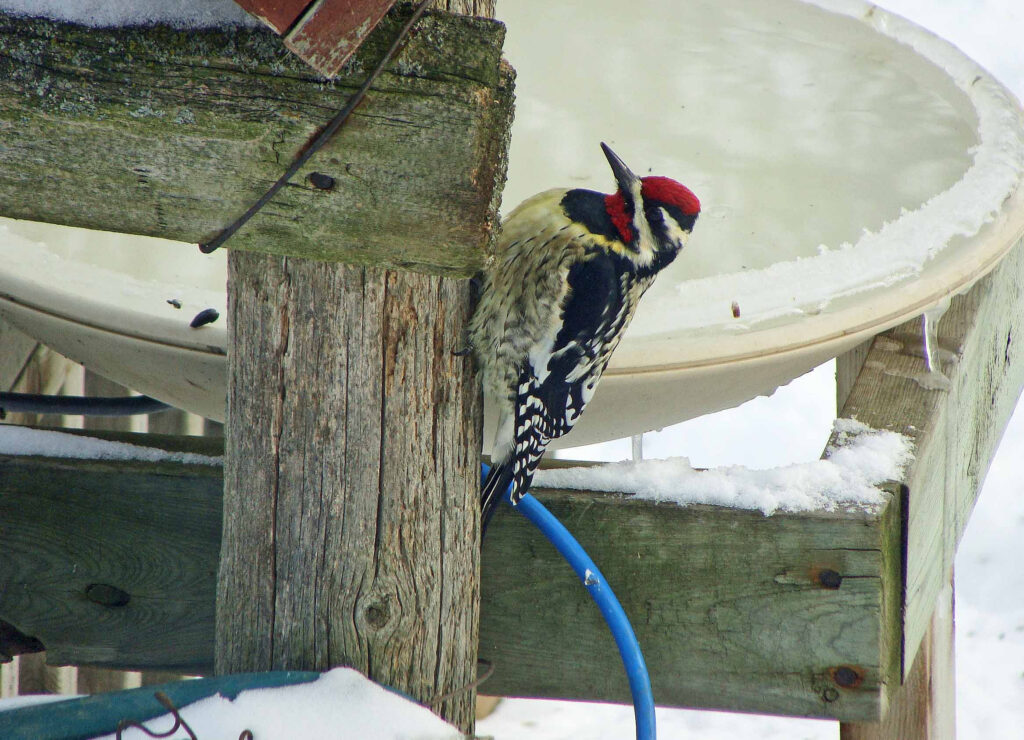Prince Edward County, Ontario, Canada
What Bird Species Can We Expect To See in February?
What has already been said about January can also be applied to February. As far as snow goes, there has been little through January, but lots of rain. However, it is still winter and I am sure winter isn’t over yet! Any good species that occurred in January will likely spill over into February. This month there are numerous RED-TAILED HAWKS about, along with the occasional ROUGH-LEGGED HAWK, and their presence is apt to continue into this month. This has been an excellent winter so far for BALD EAGLES, and more may turn up as we continue through February. At least 20-30 are present in Prince Edward County County alone, and others are being seen regularly north of the County line such as Belleville, Madoc, Marmora, etc. A good spot to look for them is at the Glenora Ferry landing where several can often be seen on the ice. Prince Edward Point, Prince Edward Bay from Waupoos to Cressy, Lakeside Road, and from Prinyer’s Cove west to Glenora are also good places to check for BALD EAGLES this month. Very few SNOWY OWLS so far though.

By the second week of February we can begin to expect a few of the earlier migrants to appear. Seems rather odd to be saying that when snow of varying amounts may still be on the ground and some really cold temperatures some days. Early migrants such as AMERICAN CROWS which continue to remain through the winter in increasing numbers each year, will start to increase in population toward the end of February. Keep your eyes and ears open for COMMON RAVENS as their numbers are exploding throughout the general Quinte region as the species continues its range expansion south, and which have nested in the County since 2006. But even earlier than that, we can always depend on seeing increasing numbers of HORNED LARKS by mid-February, arriving on average in Prince Edward County by February 12th. This HORNED LARK was photographed by Wellington area resident Daniel LaFrance along Conley Road, just east of the village. However, through January, isolated groups of HORNED LARKS were seen throughout the month, all of them of the northern sub-species which winter here, often associating with SNOW BUNTINGS and even a few LAPLAND LONGSPURS. Peculiar has been the presence since mid-January of the usual prairie sub-species which normally don’t start showing up until mid-February, and it’s not just here either. Several of the prairie sub-species were noted on Wolfe Island, too, far earlier than normal. The arrival of these migrants is separated from wintering individuals by an increase in number of these birds as they feed along the road shoulders in areas scraped bare by the snowplow. Their musical tinkling in the snow covered meadows is music to the ears at the time of the year when little else is heard in the way of bird song.

Waterfowl watching this month may be favourable if cold temperatures let up a bit. Many bays and lakes are still covered in ice right now, but they may open a bit this month, providing areas where waterfowl can gather. In Prince Edward County we may expect some good waterfowl watching at Prince Edward Point, West Point at Sandbanks Provincial Park, Soup Harbour at Point Petre, and at the Wellington Harbour when conditions permit. MUTE SWANS that have been hanging around the open waters of the county since early winter will likely remain for the rest of the season. Surprisingly, there are still numerous TUNDRA SWANS about so keep watch for them. A few TRUMPETER SWANS are also turning up in County waters as a result of the release of a couple dozen at Big Island and Huff’s Island back in 2006. Two or three can usually be found, and this winter, there have been several at Wellington. The many thousands of CANADA GEESE that winter in Prince Edward County waters, will likely turn up wherever there is sufficient open water, or fields of unharvested corn, or corn stubble.

GREAT HORNED OWLS will begin nesting in earnest later this month and they will be more commonly seen in wooded areas as nesting activities get under way, but this winter they seem to be nowhere common although a few can be heard calling early in the morning. The number of BARRED OWLS this winter seems higher than it was last winter at this time. They can show up anywhere, even in backyards.
Wild berry crops are not that great this winter, so this has resulted in fewer numbers of AMERICAN ROBINS and YELLOW-RUMPED WARBLERS that we have enjoyed seeing in previous winters.
Many backyard bird feeders are enjoying unprecedented success with record numbers of MOURNING DOVES, BLUE JAYS and high numbers of DARK-EYED JUNCOS. There are good numbers of RED-BELLIED WOODPECKERS about this winter, many of them coming to feeders. A few YELLOW-BELLIED SAPSUCKERS have also turned up at feeders this winter. This one came to my Big Island feeder for three consecutive winters.

In December of 2023 and into early January, an uncommon TOWNSEND’S SOLITAIRE showed up at Sandbanks Provincial Park, and an even rarer European COMMON GULL (Mew Gull) – in fact, the very first one ever to be seen in Prince Edward County, was present for one day last year at Picton Harbour. I wonder what February will bring?